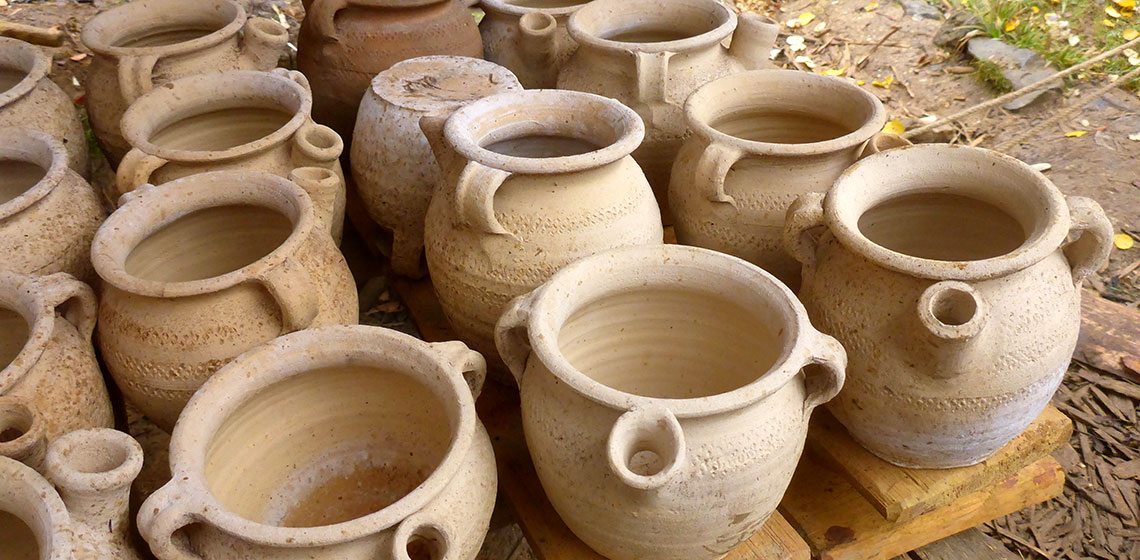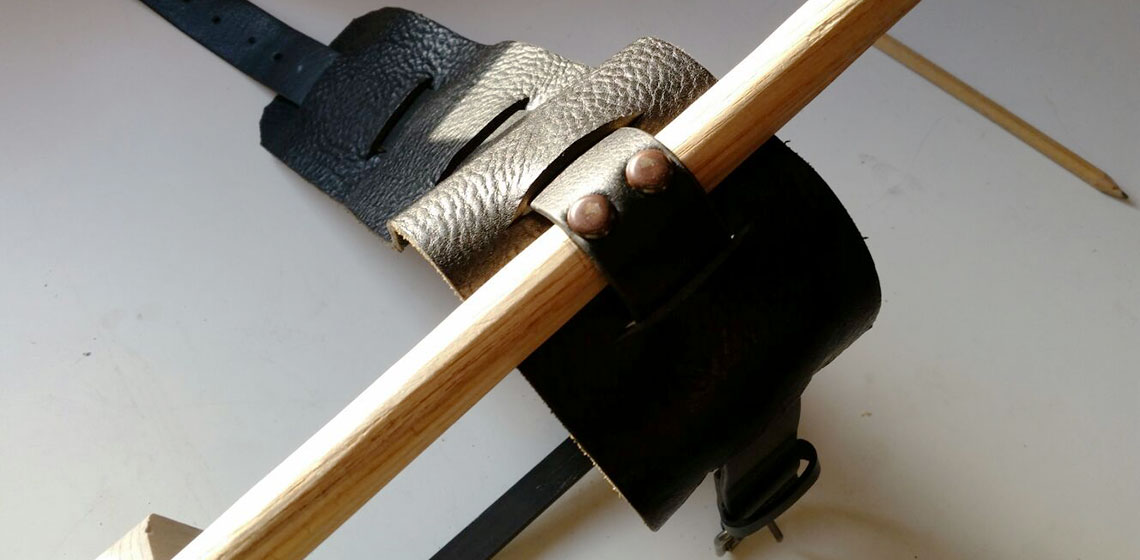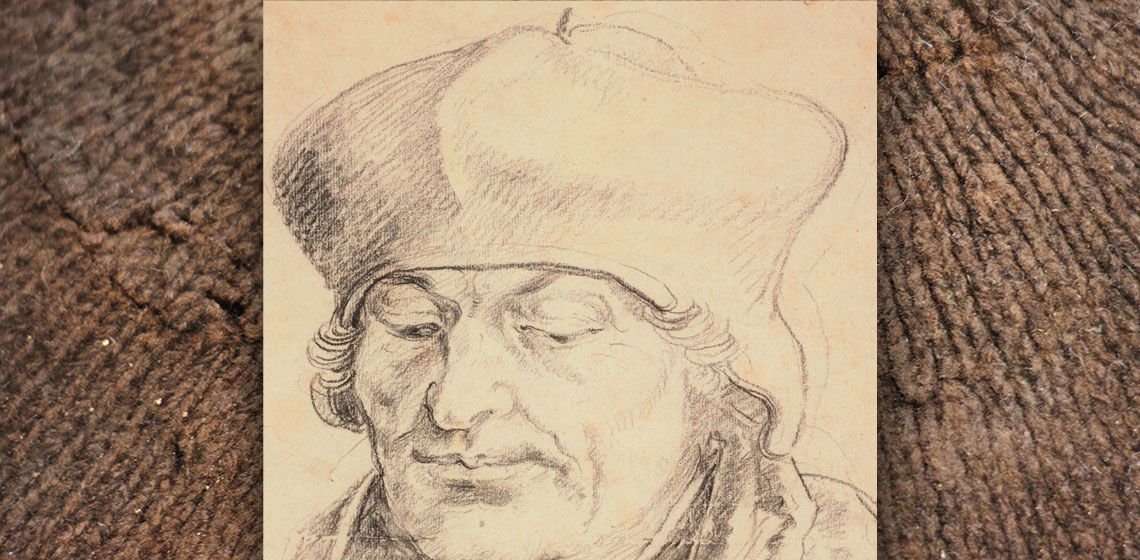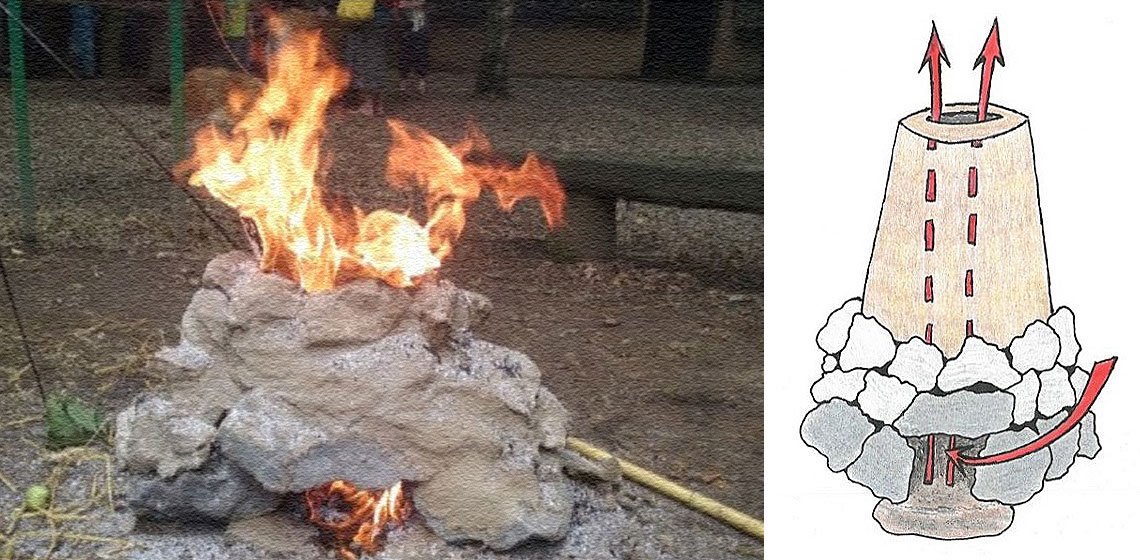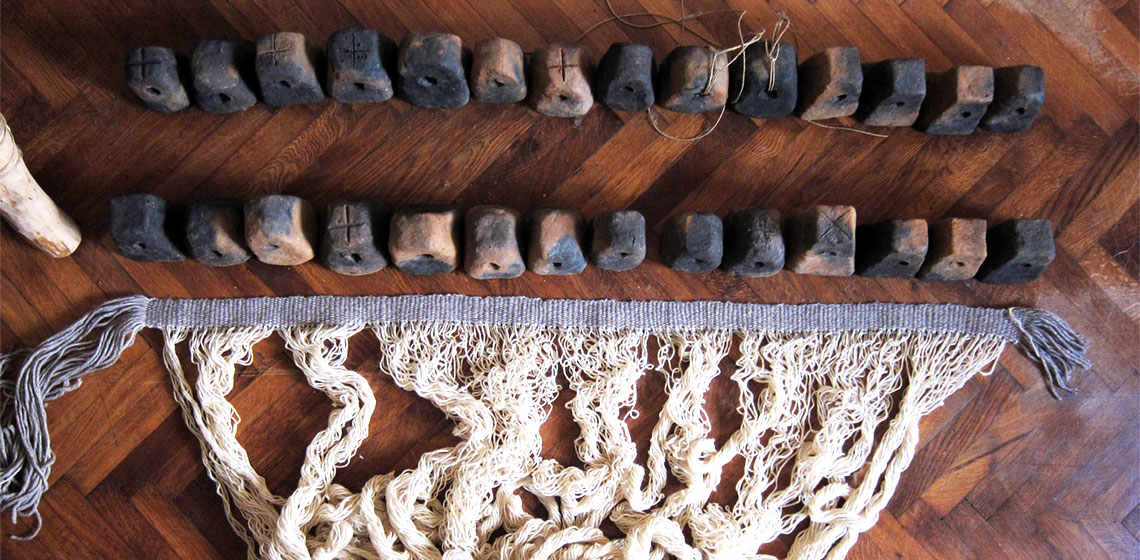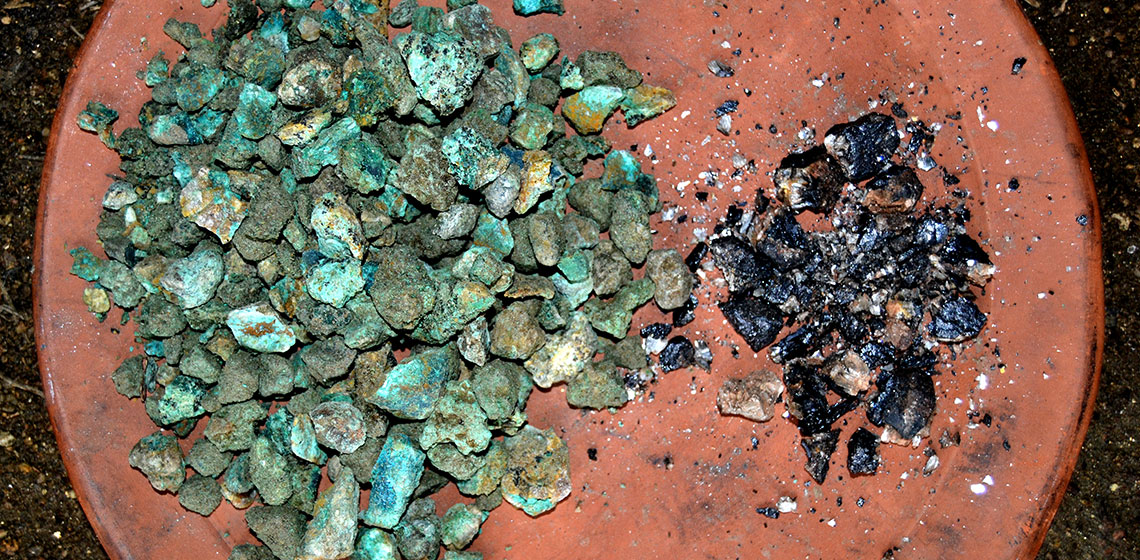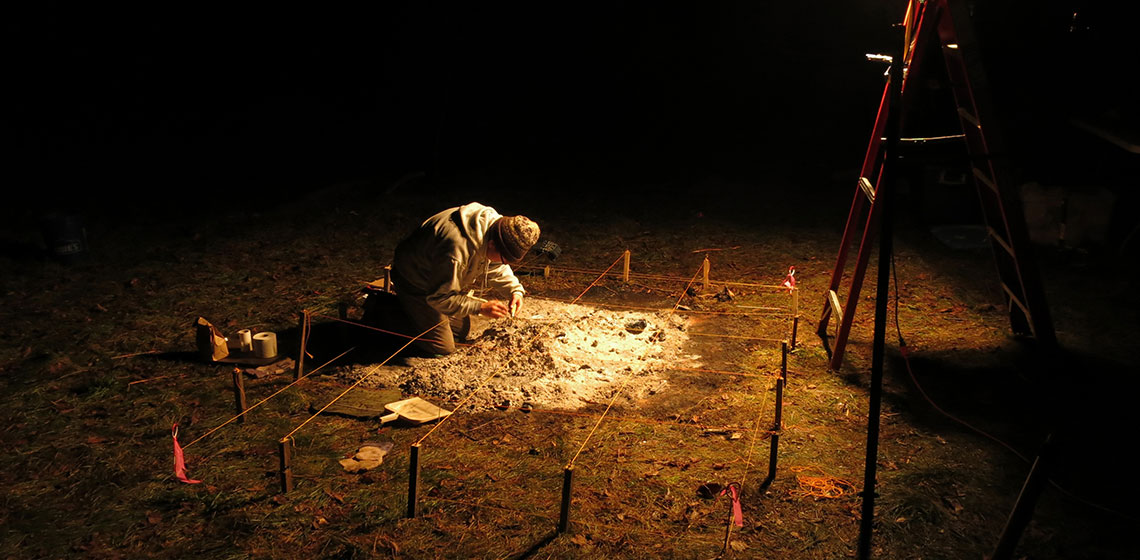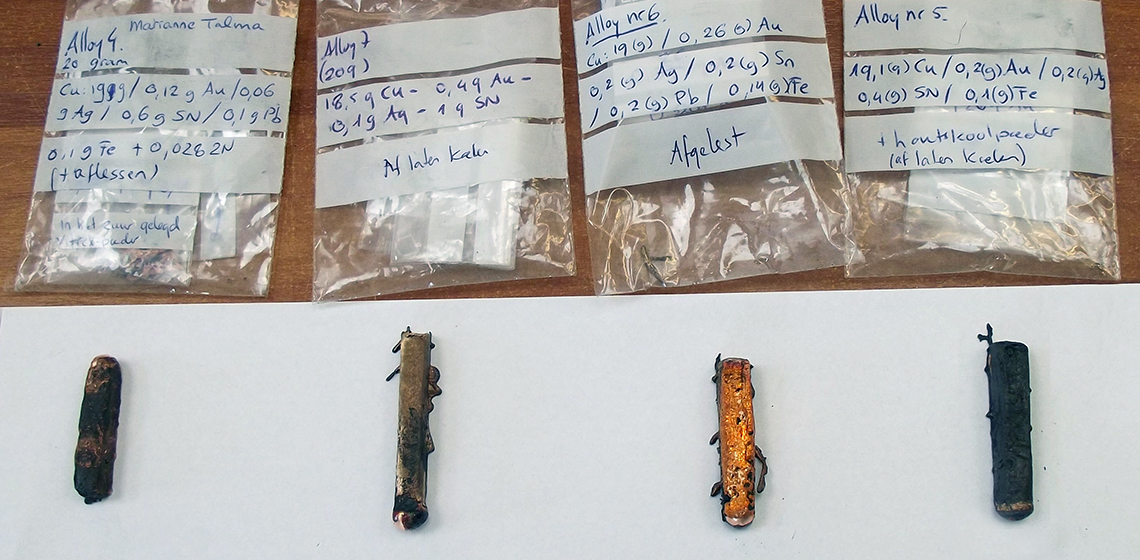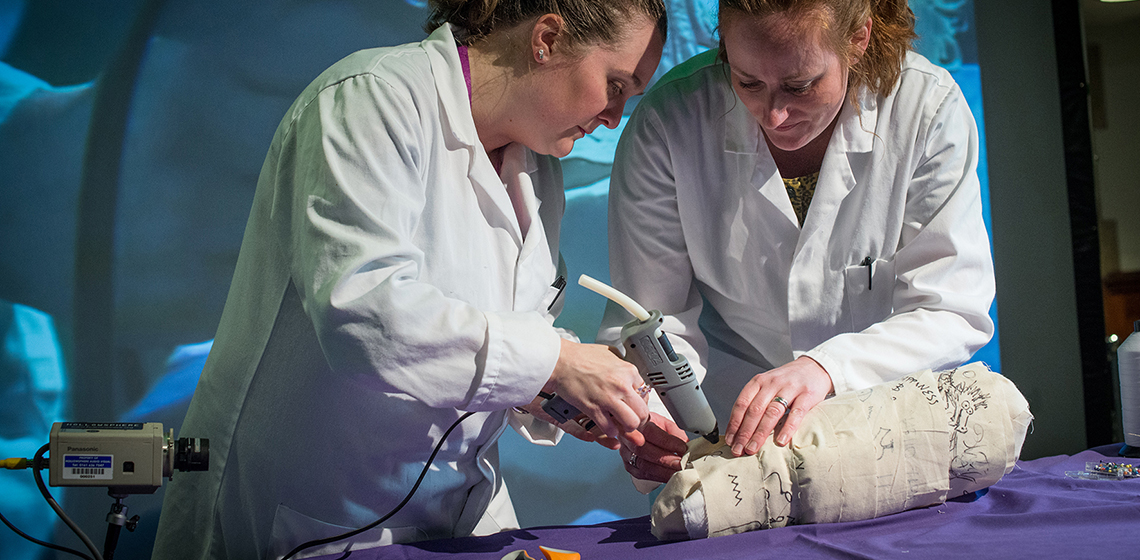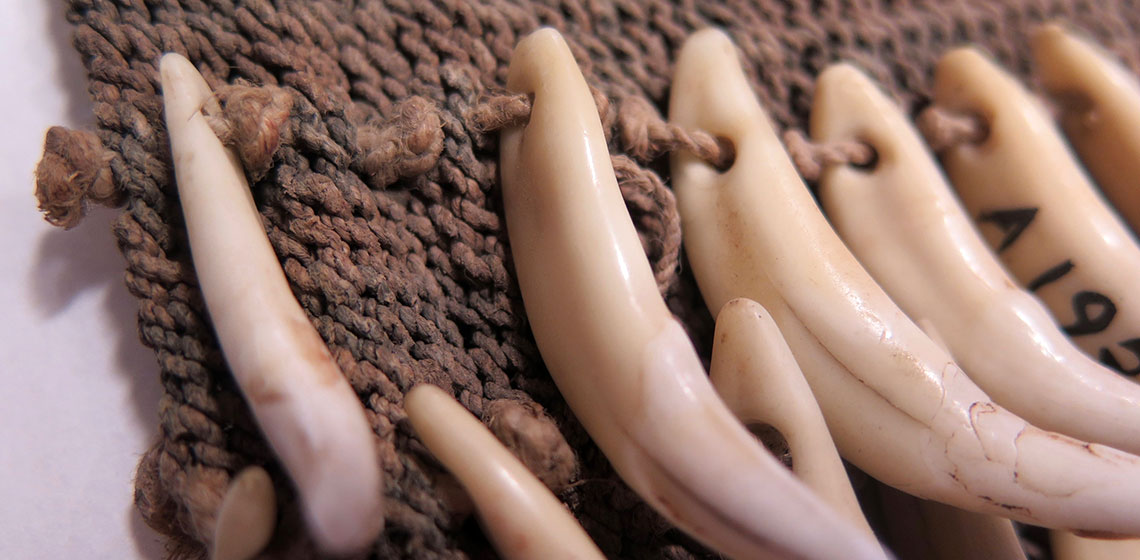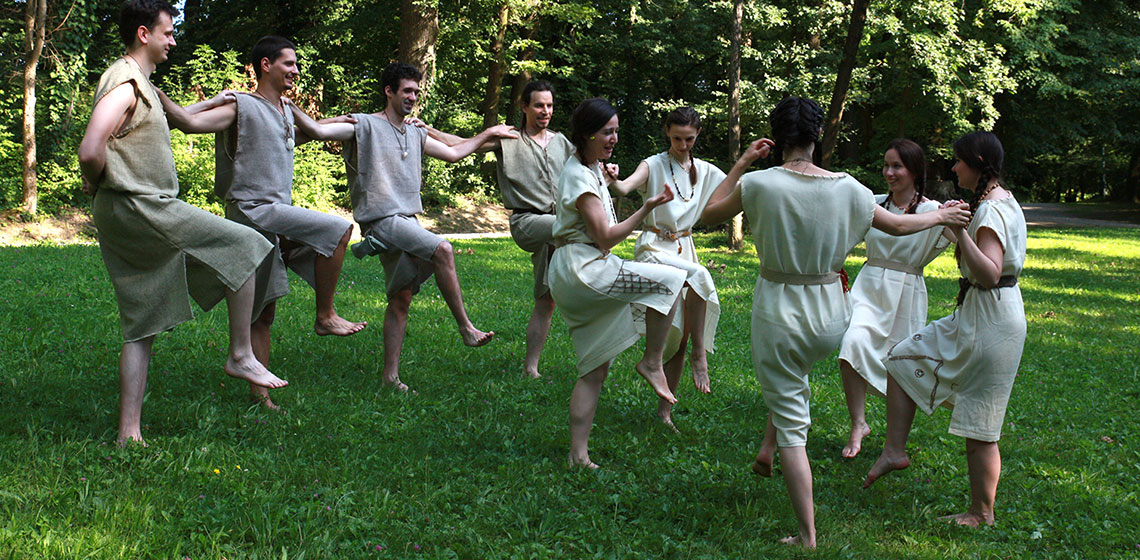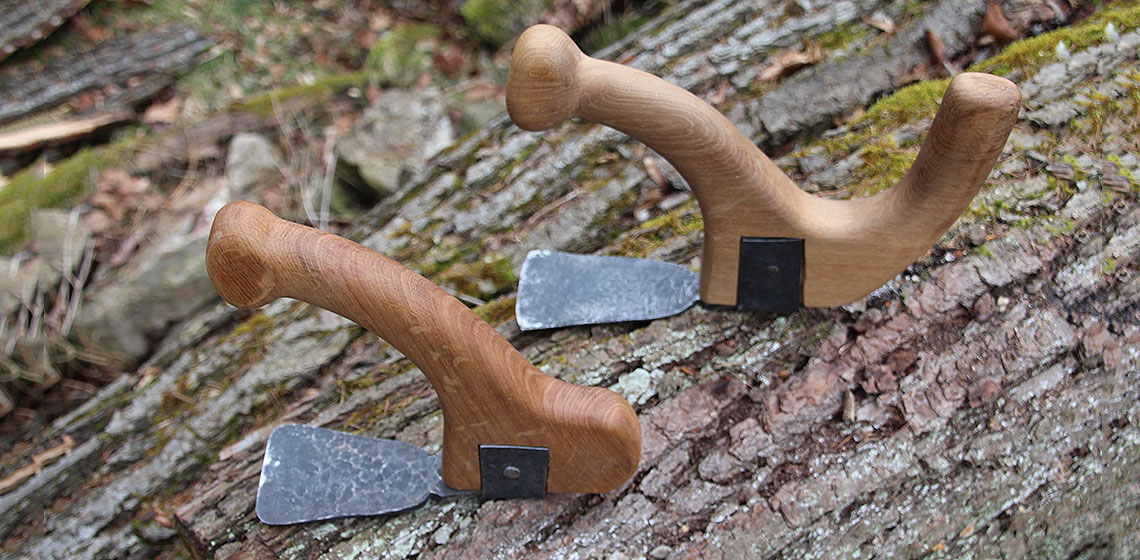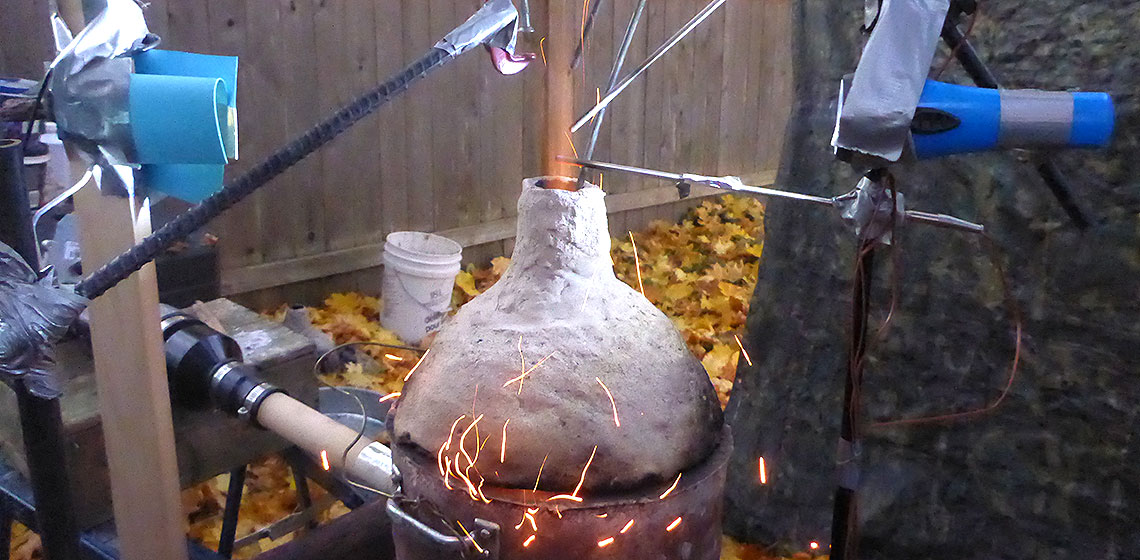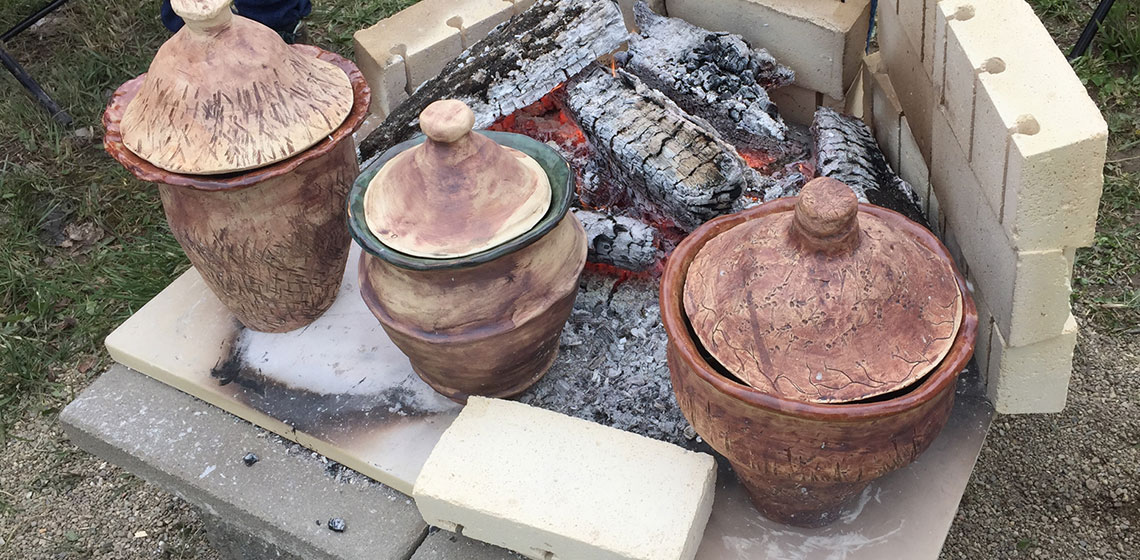The content is published under a Creative Commons Attribution Non-Commercial 4.0 License.
Themed Collections:
10th Experimental Archaeology Conference
Persistent Identifier
https://exarc.net/ark:/88735/10330
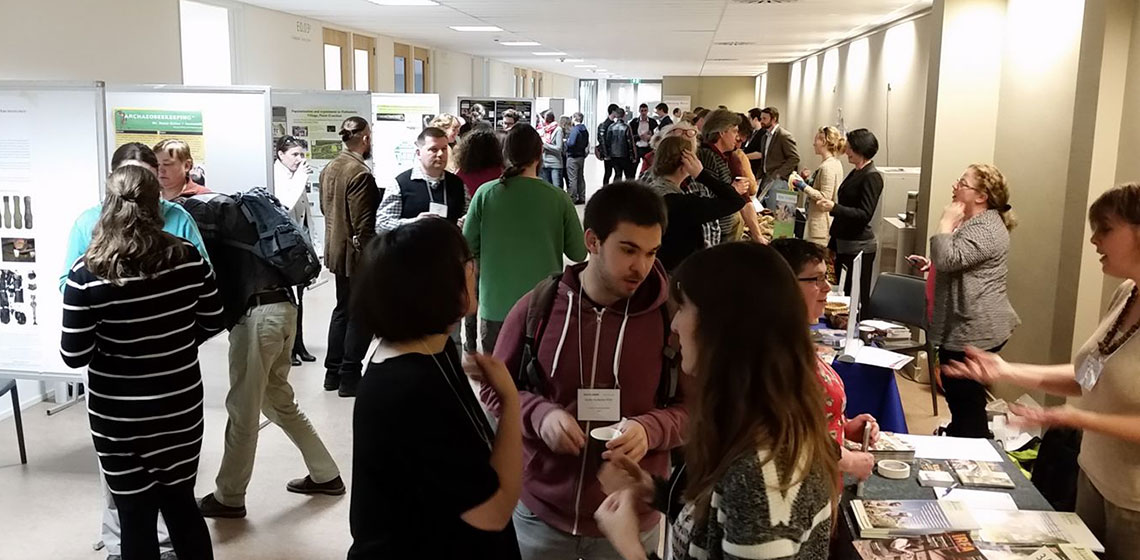
The 10th International Experimental Archaeology Conference (held in April 2017) was hosted jointly by EXARC and Material Culture Studies, Leiden University (NL). The conference two days with 125 delegates, followed by an excursion to Eindhoven and Vlaardingen. Presenters published their papers in the EXARC Journal. A review of the conference is also available, click here to view.
Featured
Scientific Profit through Daily Routine
Publication Date
10th EAC Leiden 2017
***The open-air museum Campus Galli is a construction site where we built an early medieval monastery, following the so-called “Plan of St. Gall”, an architectural drawing from the first half of the 9th century (Carolingian period) as our major reference source (cf. Schedl, 2014; Facsimile: Tremp, 2014)...
***The open-air museum Campus Galli is a construction site where we built an early medieval monastery, following the so-called “Plan of St. Gall”, an architectural drawing from the first half of the 9th century (Carolingian period) as our major reference source (cf. Schedl, 2014; Facsimile: Tremp, 2014)...
Experimental Reconstruction of a Nineteenth Century Lower Limb Prosthetic Peg Leg – The Box Leg
Publication Date
10th EAC Leiden 2017
***Scientific attempts to understand early prosthesis manufacturing techniques are rare. The academic research of artificial limbs has been limited to the historical analysis of documentary sources. This area still remains a fairly under-researched topic even under the more recent developments of disability studies (Childress, 1985)...
***Scientific attempts to understand early prosthesis manufacturing techniques are rare. The academic research of artificial limbs has been limited to the historical analysis of documentary sources. This area still remains a fairly under-researched topic even under the more recent developments of disability studies (Childress, 1985)...
Some Uses of Experiment for Understanding Early Knitting and Erasmus' Bonnet
Publication Date
10th EAC Leiden 2017
***Of Erasmus, prince of humanists (1466?-1536), no less than eight portraits from life survive – all eight in the exact same bonnet. A recently published investigation of this iconic garment (Kruseman, Sturtewagen and Malcolm-Davies, 2016) involved establishing a 250-year typology of the bonnet from iconographical sources, compiling technological and economic data from archival sources, and systematic experiments addressing numerous, various and fundamental questions, from yarn characteristics in archaeological knitted textiles to the use (or not) of hatter's forms in the finishing of bonnets.
***Of Erasmus, prince of humanists (1466?-1536), no less than eight portraits from life survive – all eight in the exact same bonnet. A recently published investigation of this iconic garment (Kruseman, Sturtewagen and Malcolm-Davies, 2016) involved establishing a 250-year typology of the bonnet from iconographical sources, compiling technological and economic data from archival sources, and systematic experiments addressing numerous, various and fundamental questions, from yarn characteristics in archaeological knitted textiles to the use (or not) of hatter's forms in the finishing of bonnets.
Experimental Archaeometallurgy of Early-Middle Bronze Age Cyprus: Pilot Experiments of Copper Smelting at Pyrgos-Mavroraki
Publication Date
10th EAC Leiden 2017
***Pyrgos-Mavroraki, an early 2nd millennium BC proto-industrial settlement, is an excellent case-study on which to apply experimental archaeometallurgy because it presents many different elements connected to the chaine-operatoire of copper metallurgy, typical of Early/Middle Bronze Age Cyprus. The site excavated by the Italian Archaeological Mission of the ITABC-CNR of Rome...
***Pyrgos-Mavroraki, an early 2nd millennium BC proto-industrial settlement, is an excellent case-study on which to apply experimental archaeometallurgy because it presents many different elements connected to the chaine-operatoire of copper metallurgy, typical of Early/Middle Bronze Age Cyprus. The site excavated by the Italian Archaeological Mission of the ITABC-CNR of Rome...
Understanding the Archaeological Record: Reconstructing a Warp-Weighted Loom
Publication Date
10th EAC Leiden 2017
***The paper deals with a reconstruction of a warp-weighted loom based on a rare find of 36 in situ loom weights in an object interpreted as a weaving hut at an archaeological site Virje-Sušine in Northern Croatia dated in late Iron Age (La Tène C period, 2/2 3rd – 2/2 2nd century BC)...
***The paper deals with a reconstruction of a warp-weighted loom based on a rare find of 36 in situ loom weights in an object interpreted as a weaving hut at an archaeological site Virje-Sušine in Northern Croatia dated in late Iron Age (La Tène C period, 2/2 3rd – 2/2 2nd century BC)...
Learning to Recreate, Recreating to Learn. Experimental Archaeology
Publication Date
10th EAC Leiden 2017
***This paper aims to present and discuss ongoing activities that combine Experimental Archaeology and Ethnoarchaeology developed in the scope of a master's degree, a post-doctoral and other research projects at the University of Vigo (Galicia, Spain), in collaboration with regional open-air museums and educational centres...
***This paper aims to present and discuss ongoing activities that combine Experimental Archaeology and Ethnoarchaeology developed in the scope of a master's degree, a post-doctoral and other research projects at the University of Vigo (Galicia, Spain), in collaboration with regional open-air museums and educational centres...
Experimental Approaches to Student Success
Publication Date
10th EAC Leiden 2017
***An undergraduate student who hopes to secure meaningful work or pursue graduate studies needs to have excellent grades. This is true for all disciplines, but especially for niche fields like archaeology. Grades alone, however, are rarely enough. Employers and graduate schools seek candidates that are not only ‘book smart’ but who have...
***An undergraduate student who hopes to secure meaningful work or pursue graduate studies needs to have excellent grades. This is true for all disciplines, but especially for niche fields like archaeology. Grades alone, however, are rarely enough. Employers and graduate schools seek candidates that are not only ‘book smart’ but who have...
An Experimental Diachronic Exploration of Patination Methodology of Dark Patinated (Arsenical) Copper Alloys on Case Studies from the Eastern Mediterranean Bronze Age and Early Iron Age
Publication Date
10th EAC Leiden 2017
***Artificially patinated copper alloys are found archaeologically in polychrome artefacts from the 19th century BC Egypt to historical and contemporary Japan. The unusual colour variations observed in these patinas, ranging from black to blue to purple, is due to a minor amount of gold (Au) and silver (Ag) in their copper matrix, whereas accompanying elements such as tin (Sn), iron (Fe), and arsenic (As) might influence workability, hue or shine.
***Artificially patinated copper alloys are found archaeologically in polychrome artefacts from the 19th century BC Egypt to historical and contemporary Japan. The unusual colour variations observed in these patinas, ranging from black to blue to purple, is due to a minor amount of gold (Au) and silver (Ag) in their copper matrix, whereas accompanying elements such as tin (Sn), iron (Fe), and arsenic (As) might influence workability, hue or shine.
The Experimental Building of a Wooden Watchtower in the Carolingian Southern Frontier
Publication Date
10th EAC Leiden 2017
***During fifteen days of June 2015, the team of l’Esquerda worked in a research project to build a Carolingian wooden watchtower on the River Ter, in Roda de Ter, Catalonia, Spain. The idea was to test our hypotheses experimentally, (a) if the wooden watchtower could...
***During fifteen days of June 2015, the team of l’Esquerda worked in a research project to build a Carolingian wooden watchtower on the River Ter, in Roda de Ter, Catalonia, Spain. The idea was to test our hypotheses experimentally, (a) if the wooden watchtower could...
‘Re-rolling’ a Mummy: an Experimental Spectacle at Manchester Museum
Publication Date
10th EAC Leiden 2017
***Ancient Egyptian animal mummies and votive statuettes were often wrapped in linen, concealing the contents and conferring sanctity to the remains. Mummy autopsies were commonplace in 19th century Europe, when ancient mummified bodies were unwrapped to reveal what lay beneath the linen bandages. Similarly, votive statuettes were often unwrapped upon discovery, either by...
***Ancient Egyptian animal mummies and votive statuettes were often wrapped in linen, concealing the contents and conferring sanctity to the remains. Mummy autopsies were commonplace in 19th century Europe, when ancient mummified bodies were unwrapped to reveal what lay beneath the linen bandages. Similarly, votive statuettes were often unwrapped upon discovery, either by...
Animal Teeth in a Late Mesolithic Woman’s Grave, Reconstructed as a Rattling Ornament on a Baby Pouch
Publication Date
10th EAC Leiden 2017
***In one of the Late Mesolithic graves at Skateholm, Sweden, dating from 5500–4800 BC, was buried a woman together with a newborn baby. Altogether 32 perforated wild boar (Sus scrofa) teeth, along with traces of red ochre pigment, were found in this grave. We interpreted these artefacts as a rattling ornament decorating a baby pouch...
***In one of the Late Mesolithic graves at Skateholm, Sweden, dating from 5500–4800 BC, was buried a woman together with a newborn baby. Altogether 32 perforated wild boar (Sus scrofa) teeth, along with traces of red ochre pigment, were found in this grave. We interpreted these artefacts as a rattling ornament decorating a baby pouch...
The Forgotten Movement – A (Re)construction of Prehistoric Dances
Publication Date
10th EAC Leiden 2017
***Dancing has always been and still is an integral part of the lives of individuals and communities around the world, and it forms part of the cultural identity of all traditional societies. Unlike the arguably small role it has in modern urban societies, dance had much greater role in the lives of individuals and communities of ancient and recent past (Maletić, 1986, pp.14, 41), as well as it still has in many of contemporary tribal communities...
***Dancing has always been and still is an integral part of the lives of individuals and communities around the world, and it forms part of the cultural identity of all traditional societies. Unlike the arguably small role it has in modern urban societies, dance had much greater role in the lives of individuals and communities of ancient and recent past (Maletić, 1986, pp.14, 41), as well as it still has in many of contemporary tribal communities...
Adze-plane, Skeparnon, Multipurpose Adze or Two-handled Adze? Practical Work with an Alleged Predecessor of the Woodworking Plane
Publication Date
10th EAC Leiden 2017
***This article presents a practical approach to a Graeco-Roman woodworking tool called “ascia-Hobel” in the archaeological literature, respectively “adze-plane” as the corresponding English term. The tool in question consists of an often semi-circular adze-blade attached to a two-handled shaft and seems to be suited both for chopping and...
***This article presents a practical approach to a Graeco-Roman woodworking tool called “ascia-Hobel” in the archaeological literature, respectively “adze-plane” as the corresponding English term. The tool in question consists of an often semi-circular adze-blade attached to a two-handled shaft and seems to be suited both for chopping and...
Kicking Ash, Viking Glass Bead Making
Publication Date
10th EAC Leiden 2017
***Tens of thousands (Callmer, 1977, pp.12-32) of beads marking the rich graves of the Viking world indicate that the production of these beads is an area worthy of study. Evidence such as mandrels, crucibles, bead fragments, and semi-manufactures exist at Helgo, Birka, Paviken, Hedeby (Lundström, 1976, p.3), Kaupang (Gaut, 2011, p.232), Frojel (Carlsson, 2011), Åhus (Callmer, 2001, p.138), and Ribe (Sode, 2004, p.86). At Ribe...
***Tens of thousands (Callmer, 1977, pp.12-32) of beads marking the rich graves of the Viking world indicate that the production of these beads is an area worthy of study. Evidence such as mandrels, crucibles, bead fragments, and semi-manufactures exist at Helgo, Birka, Paviken, Hedeby (Lundström, 1976, p.3), Kaupang (Gaut, 2011, p.232), Frojel (Carlsson, 2011), Åhus (Callmer, 2001, p.138), and Ribe (Sode, 2004, p.86). At Ribe...
Experimental Archaeology as Participant Observation: A Perspective from Medieval Food
Publication Date
10th EAC Leiden 2017
***Central to anthropology is the concept of participant observation, where a researcher engages in immersive learning through ethnographic fieldwork. This concept is also important for archaeologists as immersive learning provides an avenue for more robust interpretation and the development of...
***Central to anthropology is the concept of participant observation, where a researcher engages in immersive learning through ethnographic fieldwork. This concept is also important for archaeologists as immersive learning provides an avenue for more robust interpretation and the development of...


